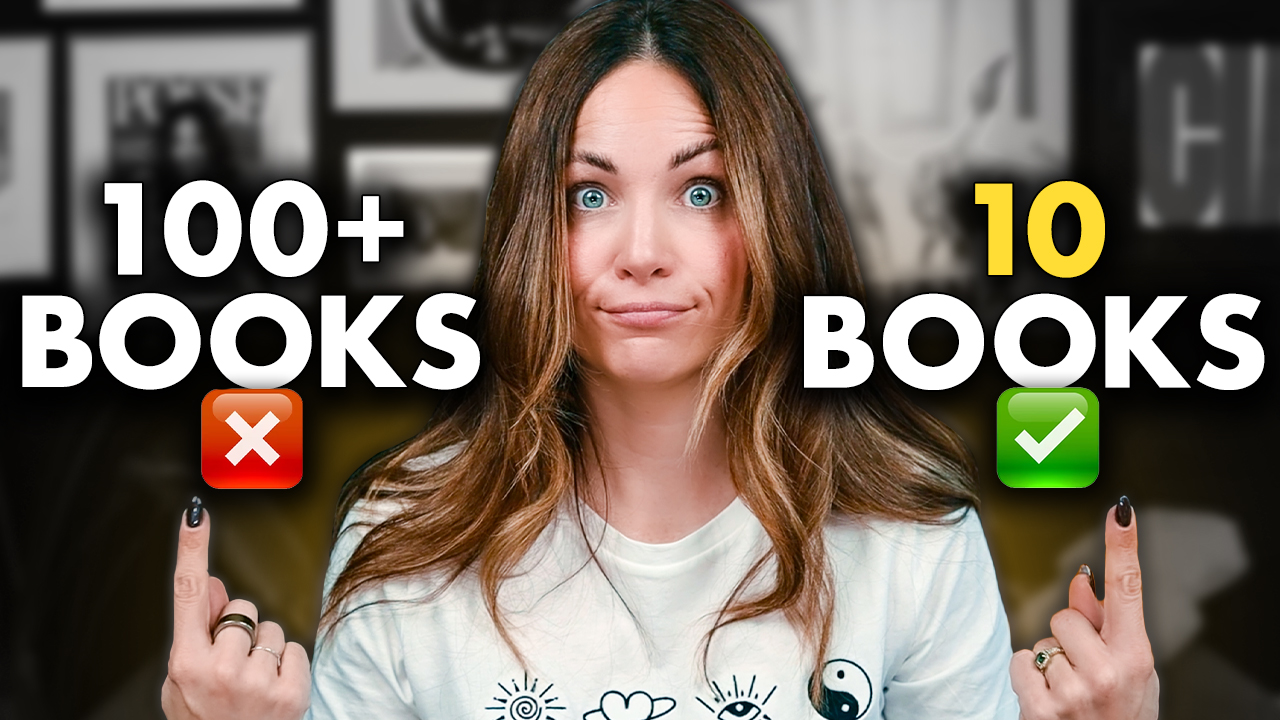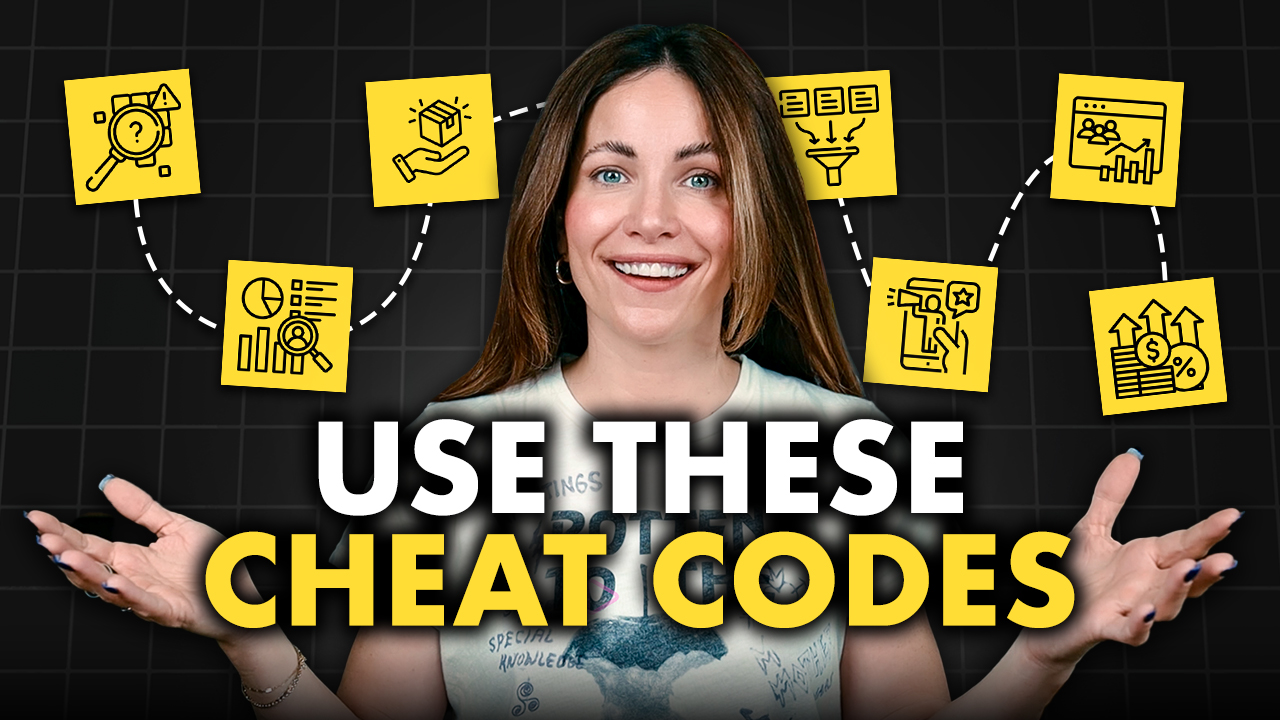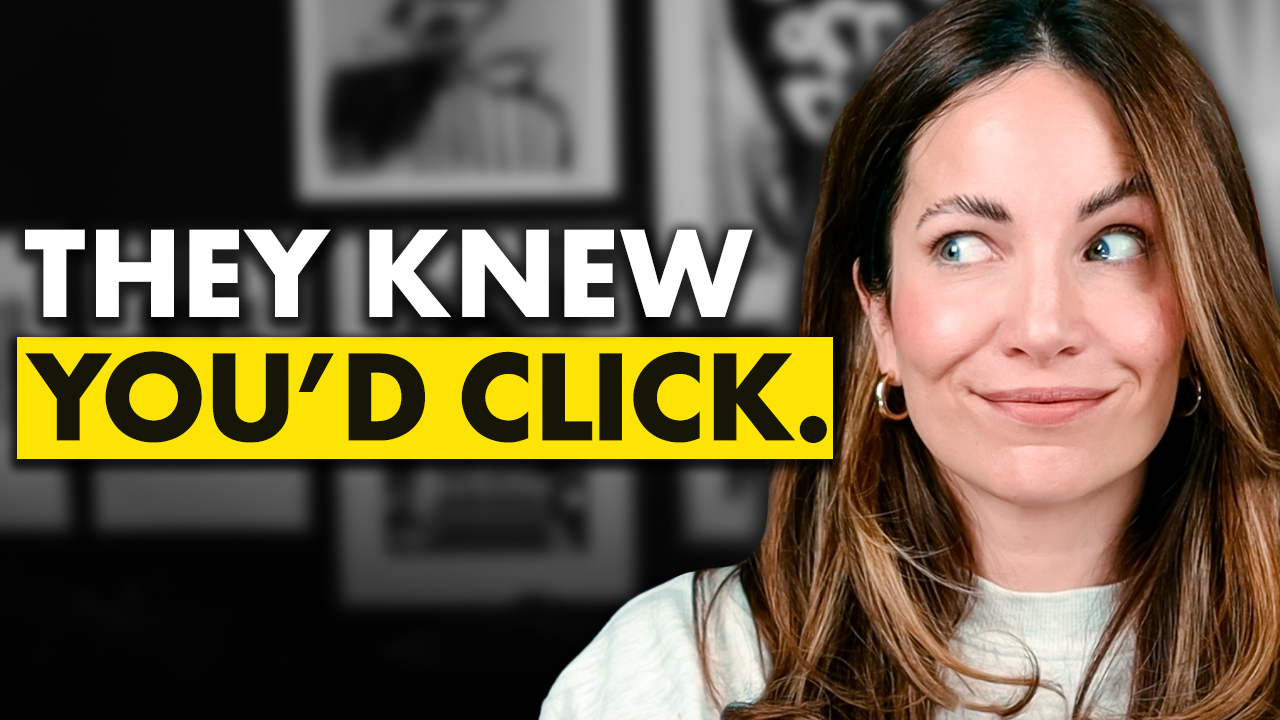Riddle me this: What is as old as time but reborn every single day? You can hear it, see it, smell it, taste it, feel it… But it’s completely invisible. It exists in every single country in the world, yet you still take it with you everywhere you go. Any guesses…?
Hey guys, it’s Alex. I’m so glad you’re here.
I’m sure many of you have guessed the riddle by reading the title of this post…
Yes, the answer is STORYTELLING.
It’s the most potent form of human communication and has been since prehistoric times. So yes, it’s as old as time. Yet new stories are being told every single day.
Storytelling evokes all your senses. According to story analyst Lisa Cron in her book, Wired For Story:
The regions of the brain that process the sights, sounds, tastes, and movement of real life are activated when we’re engrossed in a compelling narrative.
Lisa Cron, Wired for Story
So, when a story enthralls us, we are inside of it, feeling what the protagonist feels, and experiencing it as if it were indeed happening to us. So there you have it, you can hear it, see it, smell it, taste it, feel it…
Yet it’s completely invisible.
Every culture on the planet has storytelling built into its DNA. It’s how traditions, customs and norms are passed through the generations. And before there was a printing press, digital archives, voice memos and YouTube, verbal storytelling was the backbone of education and advancement.
We all remember stories that our parents and grandparents have told about their parents and their grandparents, and we’ll pass those onto our children. So yes, storytelling exists in every country in the world, yet you take it with you on your journey through life, every you go.
There’s no doubt that storytelling is insanely powerful…
And I’m definitely not the first to tell you that this form of communication is absolutely critical for engaging your audience…
Especially in a saturated, highly competitive market.
Every good marketer and copywriter knows this to be true, and uses storytelling structures in their sales letters, landing pages, email campaigns, and website copy.
It creates relatability, authority, and trust with your prospect.
But how exactly do you weave storytelling into your copy, and what are some of the best formulas that have worked time and time again?
Well I’m here to share my top four storytelling techniques which I have used again and again in my work.
If you want to learn more copywriting, marketing, and branding techniques, I share a new tutorial every week here and on my YouTube Channel — if you’re not part of the posse yet, join us! And if you’ve been with me for a while, thank you!
Now let’s move on to our list of storytelling techniques, starting with the most classic of them all…
You’ve likely heard of it…
Storytelling Technique #1. The Hero’s Journey
Also known as the Monomyth, The Hero’s Journey was conceptualized by Joseph Campbell in his book, The Hero With A Thousand Faces.
This story structure has been used in films, comics, and literature worldwide. It features a hero — aka the protagonist — as they are called to awaken their potential by setting out on a difficult journey, and ultimately triumphing over adversity.
The Hero’s Journey, which has inspired marketers and screenwriters throughout the past century, can be summarized in three main acts:
- The Departure: When an external event compels the Hero to leave their ordinary world.
- The Initiation: When the hero ventures into an unfamiliar territory (the “unknown world”), meets a mentor or guide and, of course, deals with various trials and challenges along the way.
- The Return: The Hero overcomes their struggles and is stronger and wiser, returning to their Ordinary World with a sense of victory.
You can clearly see this story arc in works such as Star Wars, Batman, Game of Thrones, The Matrix, I could go on and on. What is your favorite movie with a Hero’s Journey plot line? Let me know in the comments below!
Now, the Hero’s Journey has been fiercely studied by writers and marketers since Joseph Campbell’s book was released and there are tons of amazing resources available that walk you through this story arc step by step. (Find them later a the end of this blog!)
Alright, now moving onto storytelling technique #2…
Storytelling Technique #2. Future Pacing
Future Pacing is a type of storytelling that allows the reader to imagine themselves in their ideal future.
It’s a technique famously used in Neuro-Linguistic Programming or NLP, a unique approach to influential communication that is used by many of the world’s most notable communicators like Oprah, Martin Luther King, Tony Robbins, and many more.
NLP is a whole science that takes hours and hours and hours to master, and I am NO EXPERT AT ALL, but this one particular technique can be used pretty powerfully in copywriting.
The only thing you need to know is the ONE thing your prospects are looking for. That singular benefit. Once you’ve discovered it, use Future Pacing throughout your sales copy to help them visualize their dream life – the life they’d have AFTER you help them overcome their problem
Remember: Your brain can’t tell the difference between positive memories and positive future dreams. So by allowing your reader to imagine what’s to come, you’re telling their brain it’s already happened and therefore possible to achieve.
If you can believe it, you can achieve it, as they say.
The trick, though, is to use the present tense so that their brain recognizes it as an event that is happening or has already happened.
It’s also important to get highly specific with your future pacing. For example, instead of, “You wake up in your hotel room on your dream holiday…”
Go with:
“You wake up, not to the sound of a buzzing alarm, but to the exotic chirps of island birds perched outside your open window. You hear waves gently lapping at the shore as you slowly stretch out under a feathery king duvet. You can’t remember the last time you slept so soundly. If someone told you three weeks ago that you’d be here, you wouldn’t have believed them.”
See the difference? You guys want to give it a try? Comment below with a powerful Future Pacing statement about your life or business. And keep it specific to ONE thing.
Here’s one for me. I wake up on a gorgeous Sunday morning. The sun is filtering through the vibrant green chestnut tree on what was supposed to be a rainy day. I check my phone, and realize I have just hit 100,000 subscribers…
Ahhh… that feels good.
Ok now let’s move onto to storytelling technique #3… What I call…
Storytelling Technique #3. The Trouble Maker
This is a technique inspired by my good friend, Perry Belcher the co-owner of Digital Marketer and amazing copywriter. Earlier this year, Perry spoke at my Mastermind, Flightclub, and delivered a powerful talk on storytelling.
Perry is an avid student of storytelling techniques and takes a page from Hollywood screenplays when writing his high-converting sales letters.
He bases his copy on the fundamental truth that, “Nothing is more interesting than trouble.” Trouble equals drama, and drama keeps attention, therefore making the story more memorable and effective.
And, of course, the trouble scenarios he writes about reflect the problem that his product or service is attempting to solve.
Perry encourages copywriters to introduce trouble early on to capture attention and there are two ways you can do this…
- The Build-Up: Where everything seems to be going right, you’re setting the scene, describing the main character, building the tension… Then, just as your reader suspects, everything goes oh so very wrong you get what I call…
- The Shit Storm: Where you start your story right in the middle of chaos. Making your reader wonder – Wait? How did we get here? What happened? And how do we get out? You’ll see this technique used in more and more shows these days because people want trouble right away! Or they get bored and bounce.
The key though is to draw your prospect into that story world, then turn it upside down with trouble. This can be done by using details such as color, emotions, season, time, texture, activity, geography, mood, sound, or even smell.
This technique is conceptualized by Blake Snyder in his bestselling screenwriting book, Save The Cat! This is one of the first books I recommend you read if you want to become a copywriter. To learn the other 5, you can watch my video here.
And here’s a bonus tip: Perry has even used real life stories as inspiration for his copy. True events work even better to make your story believable and relatable!
Good thing the media loves trouble as much as your readers do! It’s not hard to find a calamity to write about. Of course, use these stories as inspiration only – everything you write needs to be your original work.
Okay, now let’s move onto the last technique…
Storytelling Technique #4. The Before-After-Bridge
Not up for Hollywood drama? Well, this B-A-B technique is one of the simplest copywriting tools that has been used in advertising since the dawn of the Mad Men era.
The Before-After-Bridge works because it moves your prospect from focusing on features and tools, to how it will help improve their life.
Here’s a quick breakdown.
In the Before: You show the reader their world before your solution. The key is to get them to identify with the problem you are presenting.
A business that utilizes this clearly is M.M.La Fleur, a wardrobe solution for professional women who, guess what — don’t like to shop.
It goes something like this: “You’re bored of wearing boring pant suits but you have better things to do than worrying about what to wear. You want to take the work out of dressing for work. If only there was a more practical, inspired wardrobe for professional women.”
You then move on to the After. Which is where you want to show your readers what their world would be like after your solution.
M.M. La Fleur describes the After like so… “But imagine if you could instead just focus on succeeding in the workplace and harnessing the power of your self-presentation… while dressing with ease.”
You’ve now created a gap between these two worlds that your prospects want to fill. So it’s time to Bridge that gap with your solution. Enter your product or service.
M.M La Fleur bridges the gap by saying…
“Fill out a brief online survey and arrive to a dressing room curated based on your fit and style preferences. Work one-on-one with a personal stylist, while enjoying coffee and prosecco. Our goal is to treat you to the most productive, personalized, and stress-free shopping experience of your life.”
To their practical target audience, this sounds heavenly. They feel heard, they feel understood, and they’re given an easy solution to solve their problem.
So there you go! Those are my top 4storytelling techniques for copywriting. I hope they give you a good idea on how to engage your audience with story. As always, please show me some love below if you found this post helpful!
If you want to find out more about these techniques, you can check out some links that I’ve provided here:
RESOURCES:
Future Pacing:
Trouble Maker:
B-A-B:
BOOKS (Affiliate Links):
I’ll be back next week with another post, so be sure you don’t miss it!
Thanks for reading, and have a great week. I’m Alex — ciao for now!
Watch This Instead


